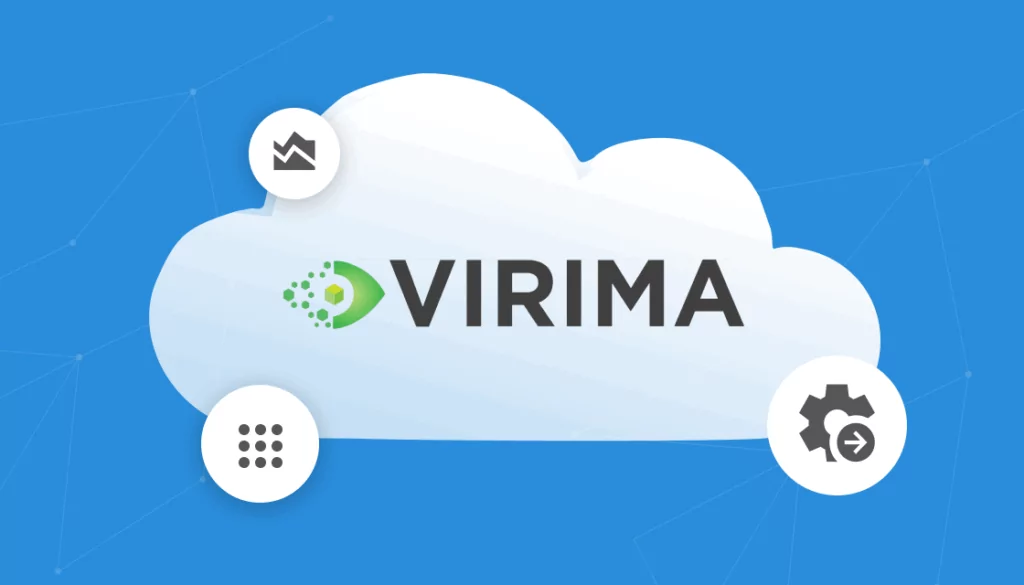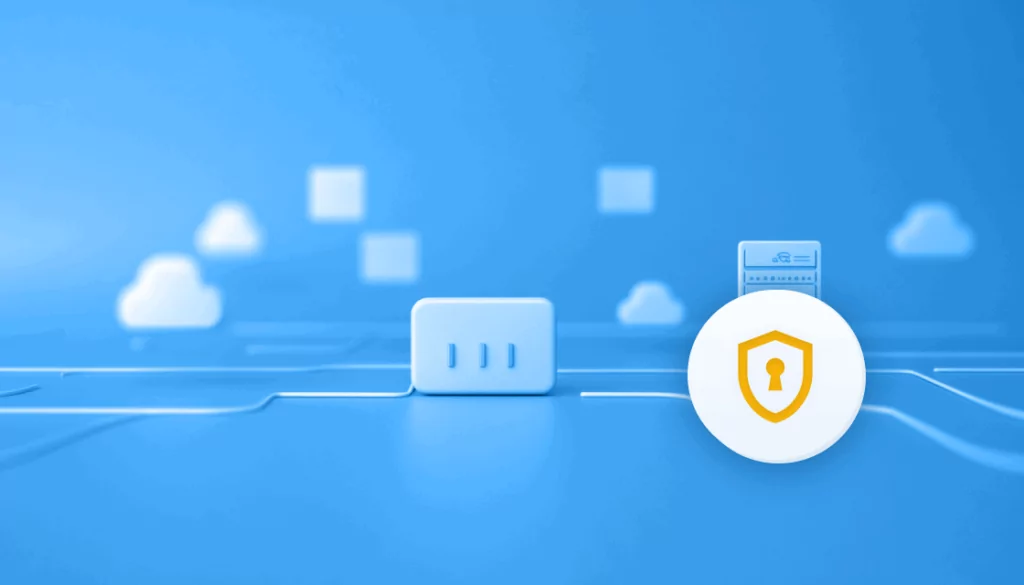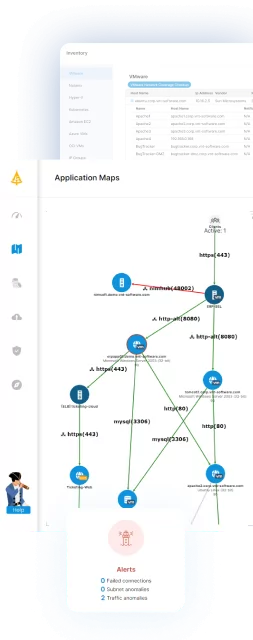What Is Application Dependency Mapping Software?
Application dependency mapping (ADM) software identifies and visualizes relationships between applications, servers, databases, and other IT components within an infrastructure. It helps organizations understand dependencies, detect performance bottlenecks, and manage changes.
ADM solutions are critical for IT operations, troubleshooting, and cloud migration planning. By automating dependency discovery, they reduce manual effort and improve visibility across complex environments.
This is part of a series of articles about application mapping
Table of Contents
ToggleComponents of On-Premise ADM Software
Agent-Based vs. Agentless Discovery
On-premise ADM software can use either agent-based or agentless discovery to collect dependency data:
- Agent-based discovery: This method installs lightweight agents on servers or applications. Agents provide real-time insights by monitoring network traffic, system calls, and application logs. However, they require installation and maintenance, which can add overhead.
- Agentless discovery: This method gathers data remotely using APIs, network sniffing, or log analysis. It minimizes infrastructure impact and simplifies deployment but may lack deep visibility into application behavior.
Data Collection Mechanisms
ADM software relies on multiple data collection techniques to map dependencies:
- Network traffic analysis: Captures communication between systems to infer relationships. Useful for identifying real-time dependencies but may require deep packet inspection.
- Log and event monitoring: Analyzes logs from applications, servers, and network devices to detect interactions and dependency patterns.
- API and configuration data: Retrieves information from application interfaces, system configurations, and management consoles. Helps understand static dependencies without monitoring live traffic.
- Service discovery protocols: Uses protocols like SNMP, WMI, and SSH to gather details about connected systems and services.
A well-designed ADM solution combines these mechanisms to provide accurate and real-time dependency maps.
Integration with CMDB
A configuration management database (CMDB) stores IT assets and their relationships. Integrating ADM software with a CMDB improves IT service management (ITSM) by keeping dependency maps up to date.
ADM tools populate the CMDB with discovered relationships, improving incident resolution, change management, and impact analysis. They also help organizations maintain compliance by providing an accurate record of IT dependencies.
Key integration features include:
- Automated discovery sync: Ensures that the CMDB reflects real-time dependencies.
- Change tracking: Detects modifications in application architecture and updates the CMDB accordingly.
- Visualization and reporting: Helps IT teams analyze and act on dependency data efficiently.
Security and Data Privacy in On-Premise Deployments
On-premise ADM solutions must address security and data privacy concerns to protect sensitive infrastructure information.
Key considerations include:
- Access control: Role-based access ensures that only authorized users can view or modify dependency data.
- Data encryption: Encrypting data at rest and in transit prevents unauthorized access.
- Network segmentation: Limiting ADM traffic to isolated networks reduces exposure to threats.
- Compliance adherence: Organizations must align ADM deployments with regulatory standards like GDPR, HIPAA, or ISO 27001.
5 Notable On-Premise ADM Software
1. Faddom
Faddom is an agentless application dependency mapping platform designed for on-premises, cloud, and hybrid environments. It provides a real-time, interactive view of your IT infrastructure by automatically and passively discovering all network components, connections, and dependencies. This capability allows IT teams to improve troubleshooting, security, and compliance without disrupting operations. With a deployment time of under 60 minutes, Faddom ensures quick time-to-value and offers real-time visibility into your IT environment.
Key features include:
- Agentless asset discovery: Instantly detects and visualizes dependencies without requiring agents. Collects data via network traffic analysis to ensure accuracy without system disruption.
- Real-time dependency mapping: Continuously visualizes the dependencies of applications and infrastructure, helping IT teams understand the full picture of their environment.
- Business application grouping: Automatically identifies application components and organizes them into logical groups for easier analysis and management.
- Change tracking and impact analysis: Detects changes in real time and helps assess their impact on applications and infrastructure.
- CMDB and ITSM integration: Synchronizes with existing tools like ServiceNow to maintain up-to-date and actionable configuration data.
- Security and compliance support: Helps identify unauthorized changes, unexpected connections, and shadow IT, supporting governance and regulatory standards.
2. Device42
Device42 is an application dependency mapping solution that provides visibility into the relationships between business applications, network components, and services across on-premises, cloud, and multi-cloud environments. With automated discovery and visualization, it helps IT teams to document, manage, and optimize their application architecture.
Key features include:
- Business application mapping: Visualizes how different devices and resources interact to form business applications.
- Affinity groups and AppFocus filters: Organizes application components based on relationships, helping teams analyze dependencies.
- Automated service impact discovery: Identifies how changes in infrastructure affect business applications to improve change management and troubleshooting.
- Customizable visualizations: Allows users to manually adjust layouts, add shapes, colors, and metadata such as application type, ownership, and SLAs.
- Integration with ITSM workflows: Improves incident response and IT service management by uncovering application dependencies.
Source: Device42
3. SolarWinds Server & Application Monitor
SolarWinds Server & Application Monitor (SAM) is a solution for monitoring server and application performance across hybrid IT environments. As part of SolarWinds Observability Self-Hosted, it provides continuous monitoring, dependency mapping, and cross-stack correlation to help organizations optimize performance, detect issues, and maintain availability.
Key features include:
- End-to-end monitoring: Tracks the application stack, providing visibility into IT environments for faster issue resolution.
- Application dependency mapping: Visualizes relationships between applications, servers, and services to improve troubleshooting and impact analysis.
- Server capacity planning: Forecasts resource usage to help prevent capacity exhaustion and optimize infrastructure performance.
- Custom application monitoring: Supports monitoring for both commercial and custom applications.
- Observability: Extends beyond traditional server monitoring, integrating network, virtualization, and log analysis for deeper insights.
Source: SolarWinds
4. Dynatrace Topology Discovery and Application Mapping
Dynatrace Topology Discovery and Application Mapping provides automated insights into an organization’s technology stack. Using AI-based Smartscape technology, it continuously discovers components, dependencies, and relationships across applications, services, processes, and infrastructure.
Key features include:
- Automated discovery: Installs an agent to auto-detect components and dependencies across the IT environment.
- Smartscape visualization: Provides an interactive topology map that updates as the IT environment evolves.
- AI-driven insights: Learns normal system behavior, detects anomalies, and performs automated root-cause analysis to identify performance issues.
- Technology coverage: Supports AWS, Azure, Kubernetes, Docker, MySQL, .NET, Java, Linux, Windows, and other platforms.
- Continuous change detection: Recognizes changes in application topology and infrastructure without manual intervention.
Source: Dynatrace
5. JDisc Discovery
JDisc Discovery is a network discovery and IT documentation solution for heterogeneous environments. It scans networks without proprietary agents, identifying devices across operating systems, protocols, and virtualization platforms. The software provides insights into IT infrastructure, including hardware, installed applications, and virtualization clusters.
Key features include:
- Agentless network discovery: Scans IT environments without installing agents, identifying Windows, Linux, macOS, Unix, VMware, and SNMP-based devices.
- Virtualization mapping: Detects virtual machines and assigns them to physical hosts, supporting technologies like VMware, Hyper-V, and XenServer.
- Software discovery: Identifies installed applications and databases (Oracle, SQL Server, PostgreSQL), including instance details and pending patches.
- Custom reporting: Allows users to create reports with flexible field selection and filtering based on IT requirements.
- Custom attributes: Supports user-defined attributes for additional data collection, such as location details, with the ability to import from CSV or populate via scripts.
Source: JDisc
Conclusion
On-premise application dependency mapping plays a vital role in managing complex IT environments, especially when visibility, compliance, and operational control are priorities. The most effective solutions provide agentless, passive discovery with real-time mapping, offering fast deployment and minimal system impact.
Key features like automated application grouping, continuous change tracking, and integration with CMDB and ITSM tools enhance decision-making for various use cases, including migration planning, incident response, and security audits. Tools with these capabilities provide greater accuracy, reduce overhead costs, and deliver faster results, making them an ideal choice for organizations seeking clarity and control over their hybrid infrastructure.






